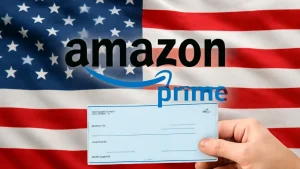Amazon is preparing to return billions of dollars to U.S. customers after agreeing to a record-breaking $2.5 billion settlement with the Federal Trade Commission (FTC) over deceptive Prime subscription practices.

The deal, finalized in October 2025, resolves years of allegations that Amazon used “dark patterns” — manipulative website design techniques — to make it confusing or time-consuming for users to cancel Prime memberships.
Of the total, $1.5 billion will go directly to consumers in the form of automatic or claim-based refunds, with payments expected to begin in early 2026.

Why Amazon is Paying Billions?
According to FTC filings, between June 2019 and June 2025, Amazon allegedly employed “subscription traps” that misled customers into joining or maintaining Prime memberships they didn’t intend to keep.
Investigators said the company used unclear buttons, multiple confirmation screens, and ambiguous cancellation flows that intentionally delayed or discouraged users from ending their subscriptions.

“Amazon tricked and trapped people into recurring payments,” said FTC Chair Lina Khan in a statement. “This settlement ensures consumers are reimbursed and sets a precedent for fair digital design.”

The FTC estimated that more than 35 million customers were impacted. The $2.5 billion agreement marks the largest consumer settlement in the agency’s history, surpassing previous tech-sector fines for deceptive digital practices.
Who Qualifies for a Refund?
Eligibility for compensation is straightforward. You may qualify if either of the following applies:

- You signed up for Amazon Prime between June 23, 2019, and June 23, 2025, while residing in the U.S.
- You attempted to cancel your Prime membership during that same period and encountered multiple confirmation screens, unclear options, or other unnecessary steps.
If you fall into one of those groups, you could receive either an automatic refund or a manual payment after submitting a claim.
Automatic Refunds: Who Gets Paid Without Applying?
The FTC and Amazon have identified a group of customers who will receive automatic refunds, requiring no action on their part.
Automatic payments will be issued to users who:
- Used three or fewer Prime benefits (such as free shipping or Prime Video) during their first year, and
- Signed up through “flagged pages” — like checkout or Prime Video prompts — where the sign-up process was later deemed unclear.
Eligible customers will receive up to $51, the equivalent of one annual Prime subscription, via their original payment method or direct deposit.
Refunds are expected to begin within 90 days of the FTC’s final court approval.
| Refund Type | Eligibility Criteria | Maximum Amount |
|---|---|---|
| Automatic Refund | Used ≤3 Prime benefits, signed up via flagged checkout or streaming pages | $51 |
| Manual Claim | All other eligible users | Varies (pro-rated) |
Manual Claims: How to File?
If you’re not part of the automatic refund group, you’ll still have a chance to claim your portion.
Amazon and the FTC will launch an official settlement claims website — expected in early 2026 — where users can file forms online, by mail, or via email.
Here’s how the process will work:
- Wait for the official claim notice — sent via email or your Amazon account.
- Submit your claim within 180 days of the notice date.
- Provide your Amazon account email or order details to verify eligibility.
- Refunds will be issued directly to your preferred payment method once approved.
If total claims exceed the $1.5 billion allocation, individual payments may be reduced proportionally.
“We’re designing this process to be as automatic as possible,” an FTC official told reporters. “Our priority is speed and simplicity for the average consumer.”
Amazon’s Response: Denial, but Compliance
Amazon continues to deny any wrongdoing, insisting that its Prime sign-up and cancellation systems were already clear.
“We work incredibly hard to make it simple for customers to sign up for or cancel Prime,” an Amazon spokesperson said. “We disagree with the FTC’s characterization but are pleased to resolve this matter and move forward.”
Still, the settlement’s size and structure — including billions in consumer refunds — highlight the FTC’s determination to crack down on “deceptive design” across the tech industry.
Why This Settlement Matters?
The Amazon case marks a watershed moment for digital consumer rights enforcement.
- For consumers: It’s a tangible acknowledgment that companies can’t use complex design or hidden buttons to manipulate user decisions.
- For regulators: It signals a stronger FTC stance on “dark pattern” enforcement, following similar warnings to streaming, delivery, and app-based subscription platforms.
- For tech firms: It’s a costly reminder that user experience design now carries regulatory and reputational risk.
“This case sets a clear line,” said Nisha Alford, a digital law expert at Georgetown University. “If your interface is designed to confuse, it’s designed to deceive — and that’s actionable.”
Amazon Prime remains a key profit engine for the company, generating more than $35 billion annually through subscription fees and related services. The settlement underscores how even profitable products can face blowback if transparency falters.
What You Should Do Now?
If you’ve ever subscribed to Prime — or tried to cancel — between 2019 and 2025, follow these steps:
- Check your Amazon account and email. Refund notices will arrive through official channels in early 2026.
- Verify your activity. If you used fewer than three Prime benefits in your first year, you might qualify for an automatic refund.
- Watch for the claim portal. Visit the official FTC refund site (to be announced) to submit your claim once open.
- Act quickly. You’ll have 180 days to file from the notice date.
- Avoid scams. Only use links from FTC.gov or Amazon.com. The FTC will never ask for banking or Social Security details outside its secure platform.
Even if your refund is small, it’s a meaningful win for consumer accountability. The case establishes a new precedent for transparency in online subscriptions — one that could reshape the digital economy.
FAQs
Why is Amazon issuing refunds to Prime users?
The FTC accused Amazon of using misleading “dark patterns” that made it difficult to cancel Prime memberships. The $2.5 billion settlement compensates users affected between 2019 and 2025.
Who qualifies for automatic refunds?
Customers who used three or fewer Prime benefits in their first year and signed up via flagged checkout or Prime Video pages.
How much can I receive?
Automatic refunds are capped at $51, while manual claims will vary based on participation.
Do I need to apply for my refund?
If you qualify for an automatic refund, no action is required. Others will need to file through the upcoming FTC claims portal.
When will payments be distributed?
Refunds are expected to start within 90 days of final court approval, anticipated in early 2026.
The Bigger Picture
The Amazon Prime settlement represents a broader cultural shift — one where digital accountability meets consumer empowerment. As regulators expand scrutiny of subscription-based platforms, tech companies may soon face a new reality: transparency is no longer optional.
“Consumers shouldn’t need a law degree to cancel a subscription,” Chair Khan said. “This case shows we’re serious about enforcing that.”

